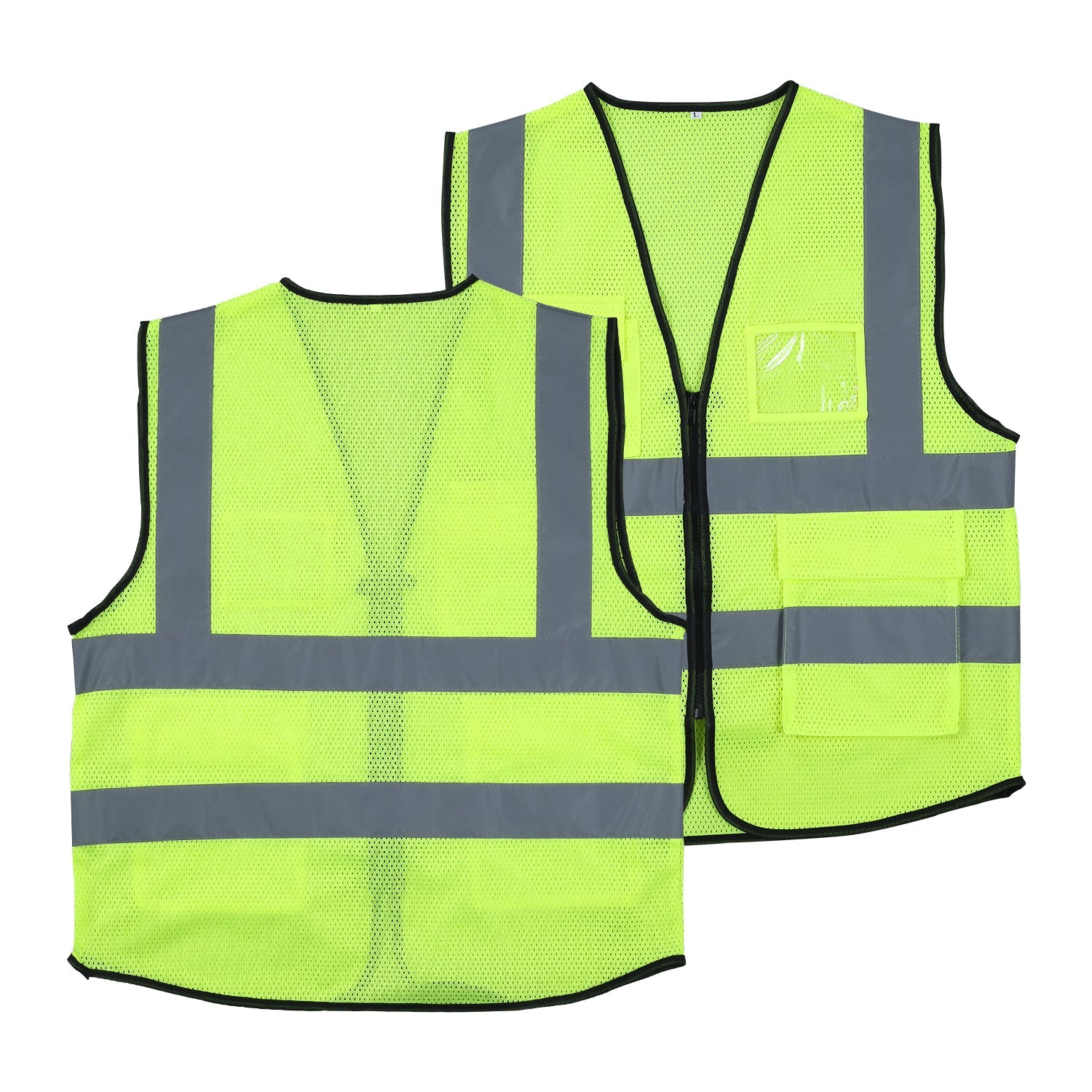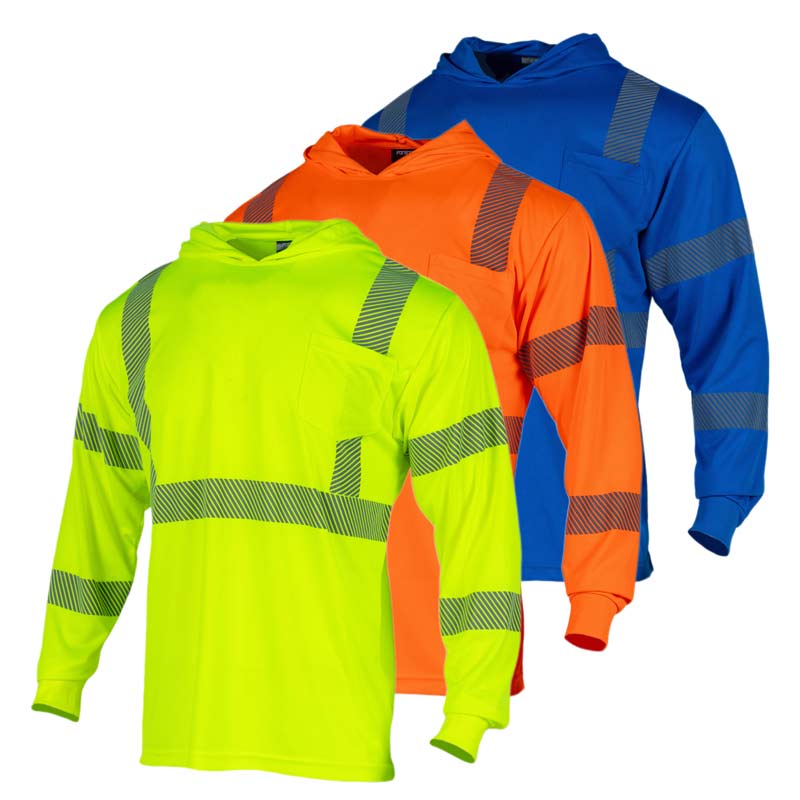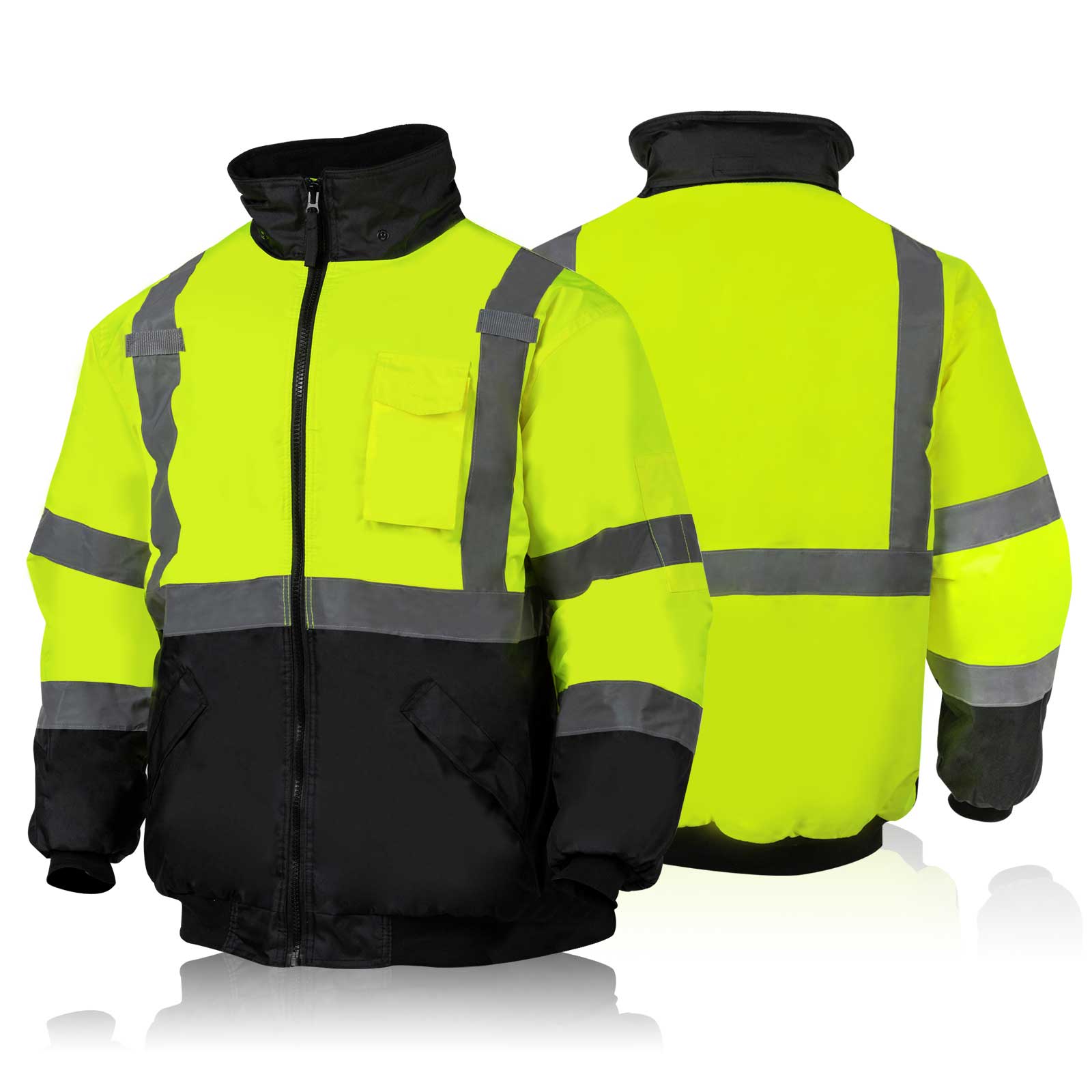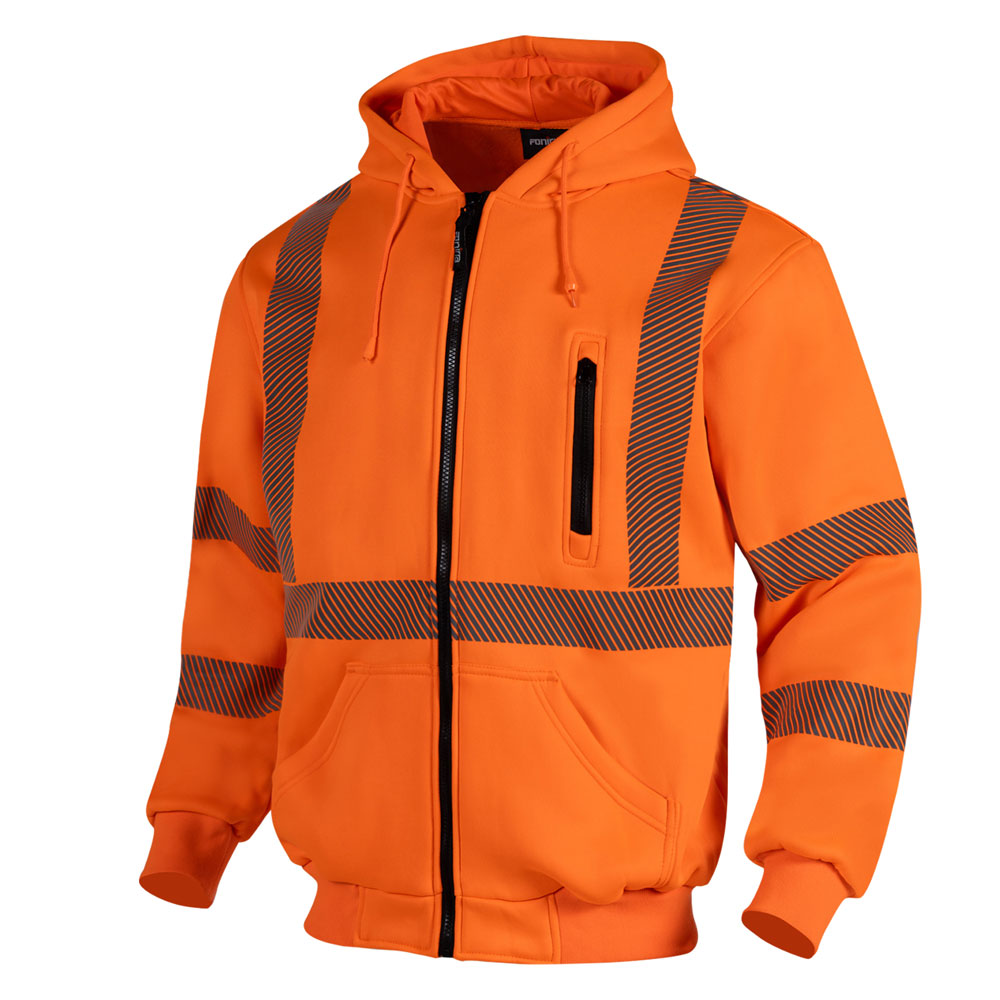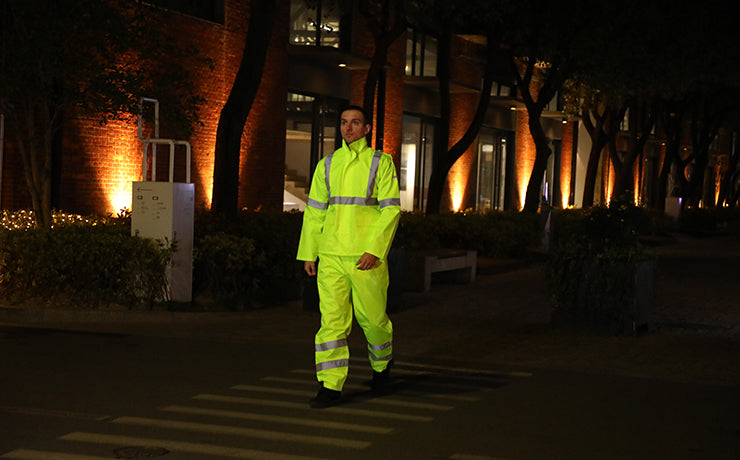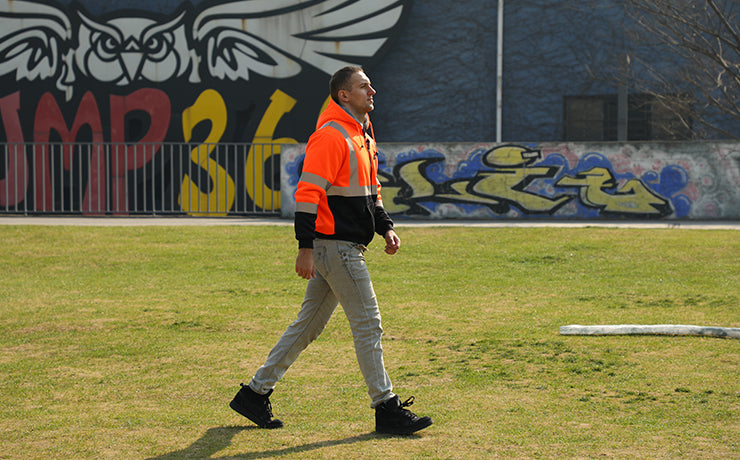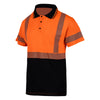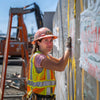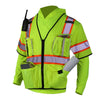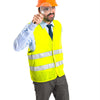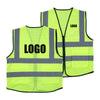What Sets Apart Construction Hi-Vis Gear From Others: 5 Key Differences
When we think about construction workers, we often picture them in special clothes, right? These aren't just any clothes; they're made to keep workers safe and comfortable on the job. Among these, high visibility (hi vis) gear stands out – literally!
Hi vis clothing is super important in construction. It's designed to make sure workers are easily seen, reducing the risk of accidents. This article will dive into the world of construction clothes, especially hi vis gear, and show you what makes them so special and important.
Construction Worker Clothing
Construction workers have a tough job, and they need clothes that can handle the challenge. What do they typically wear? Think rugged workwear – it's all about being tough and lasting long. Workers often wear durable pants, like bib overalls, and t-shirts or polo shirts, depending on the weather.

For colder days, they might add a jacket or coat to stay warm. Safety is key, so they usually have hard hats, work boots, and other protective accessories. All these pieces of clothing and gear are made to withstand tough conditions and keep the workers safe and comfortable.
Now, let's talk about hi vis gear. This is a special kind of clothing that stands out. It's not just any regular construction clothing; it's made to be super visible. This is really important in busy construction sites, where being seen can mean staying safe.
What is High Visibility Gear?
High visibility gear is a type of safety wear that's all about being seen. It's usually bright, with colors like neon yellow or orange, and it often has reflective strips. The main purpose? To make sure construction workers are easy to spot.
This is super important, especially in areas with a lot of moving equipment or vehicles. Hi vis clothing helps prevent accidents by making workers more visible to everyone around them.
As for the rules and requirements, here are some key points – no details, just a list:
-
Hi vis clothing must meet certain color standards for high visibility.
-
It should have reflective materials for low light or night work.
-
The gear must cover enough of the body to be easily seen from any direction.
-
It needs to be made of durable materials that can withstand the rough construction environment.
-
In some jobs, hi vis gear must be fire-resistant or have other specific features.
Key Difference 1: Visibility and Safety Standards
When we talk about keeping construction workers safe, visibility is key. There's a standard for this called ANSI/ISEA 107. It's like a rulebook for high visibility clothing. This standard says the clothes must be really bright, like neon colors, and have reflective parts. Why? So workers are easy to see, day or night.
How does hi vis gear meet these standards, and how is it different from regular construction gear? Here's the breakdown:
-
Bright Colors: Hi vis gear uses colors that are easy to see, like neon yellow or orange, way more than usual work clothing.
-
Reflective Strips: These are shiny strips that light up when headlights hit them, making workers visible in the dark. Regular clothes don't usually have these.
-
Wide Selection: Hi vis gear comes in many forms – vests, jackets, sweatshirts – giving workers lots of options to stay visible.
-
Covered and Safe: This gear covers key parts of the body, ensuring workers are seen from any angle. It's more than just a shirt or pants; it's a full protection package.
Key Difference 2: Material and Durability
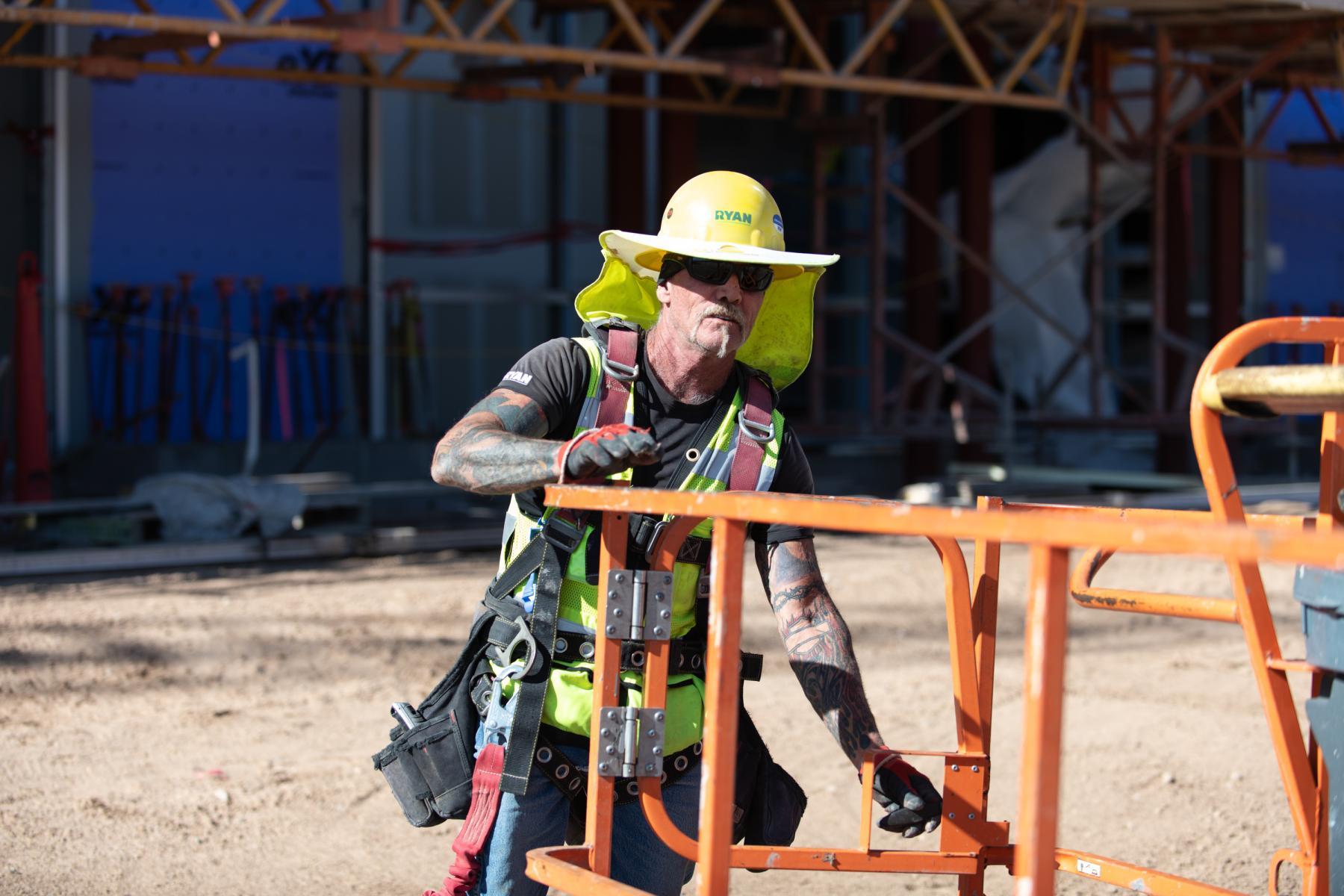
What these clothes are made of. Hi vis gear isn't just about being seen; it's also about lasting long and keeping workers safe. Here's how the material and durability of hi vis gear stack up against regular work clothing:
-
Tougher for the Job: Hi vis clothing is made to last in tough workplace conditions. It's often more rugged than standard work clothing.
-
Weather-Ready: Whether it's hot, cold, or rainy, hi vis gear is made for it all. Think coats and jackets for cold weather, and breathable vests for the hot days.
-
Safety First: This gear often has added protection features, like being water-resistant or fire-retardant, more than typical construction gear.
-
For Everyone: Hi vis clothing is made for all workers – men and women. It's designed to fit right and keep everyone safe.
-
Extra Features: Think about pockets for tools or bags, and footwear that's part of the hi vis range. These aren't just add-ons; they're part of the safety plan.
-
Head to Toe Safety: It's not just about shirts and pants. Hi vis gear includes hats, shoes, and other accessories, making sure workers are covered and protected from head to toe.
Key Difference 3: Design and Functionality
Hi vis safety gear stands out with its unique design. It's not just about bright colors; it's the reflective strips that really make a difference. They shine bright when light hits them, making sure workers are seen. This design is smart. It's not just for looks; it's for safety.
Regular construction clothes don't have these features. Hi vis gear is created to be seen, keeping workers safe on the job.
Key Difference 4: Comfort and Adaptability

Comfort and adapting to weather are big deals in hi vis gear. Think about working in rain or shine. Hi vis gear has got it covered. Brands in the market have created hi vis clothes for all conditions. There are lightweight vests for hot days and hoodies or raingear for when it's cold or wet.
This gear comes in different sizes and styles. It's all about finding the right product for the right condition. Regular work clothes might not always provide this level of comfort or adapt to weather changes as fast or as well as hi vis gear does.
Key Difference 5: Compliance and Industry Standards
In the construction industry, adhering to specific regulations regarding high visibility (hi vis) gear is crucial for workplace safety. The Occupational Safety and Health Administration (OSHA) and the ANSI/ISEA 107-2020 standards are key frameworks that guide these requirements.
OSHA mandates under the "general duty clause" that employers must ensure a workplace free from recognized hazards. This includes the use of high visibility clothing to enhance worker visibility, especially where there's a risk of being struck by vehicles or equipment. The ANSI/ISEA 107-2020 standard further refines these requirements, setting out specific design and performance criteria for high visibility safety apparel.
This standard categorizes hi vis clothing into classes based on visibility levels provided, with Class 1 offering minimum visibility and Class 3 offering maximum visibility. Key aspects of these regulations include the use of bright fluorescent materials, retroreflective materials for low-light conditions, and a minimum required area for both background and retroreflective materials depending on the class of the garment.
Choosing the Best Safety Vest and Hi Vis Gear for Construction
When it comes to selecting the right hi vis gear for construction roles, focus on the specific needs of the job and the environment. Keep in mind the class of visibility required, the fit and comfort of the gear, its suitability for weather conditions, durability, and compliance with safety standards.
For a wide selection of premium quality hi-vis gear specifically designed for the construction industry, visit Fonirra. We offer a range of products that meet various safety needs and standards, ensuring both compliance and protection for construction workers.

Conclusion
Understanding the key differences between standard construction clothing and high visibility (hi vis) gear is crucial for ensuring safety in the construction industry.
From meeting visibility and safety standards to selecting materials for durability and comfort, hi vis gear is specifically designed to address the unique challenges of construction work. Compliance with industry regulations and standards is not just a legal requirement, but a fundamental aspect of workplace safety.
For those in the construction sector, selecting the right hi vis gear, such as those offered by Fonirra, can significantly enhance safety and visibility on the job site, ultimately contributing to a safer and more efficient working environment.

